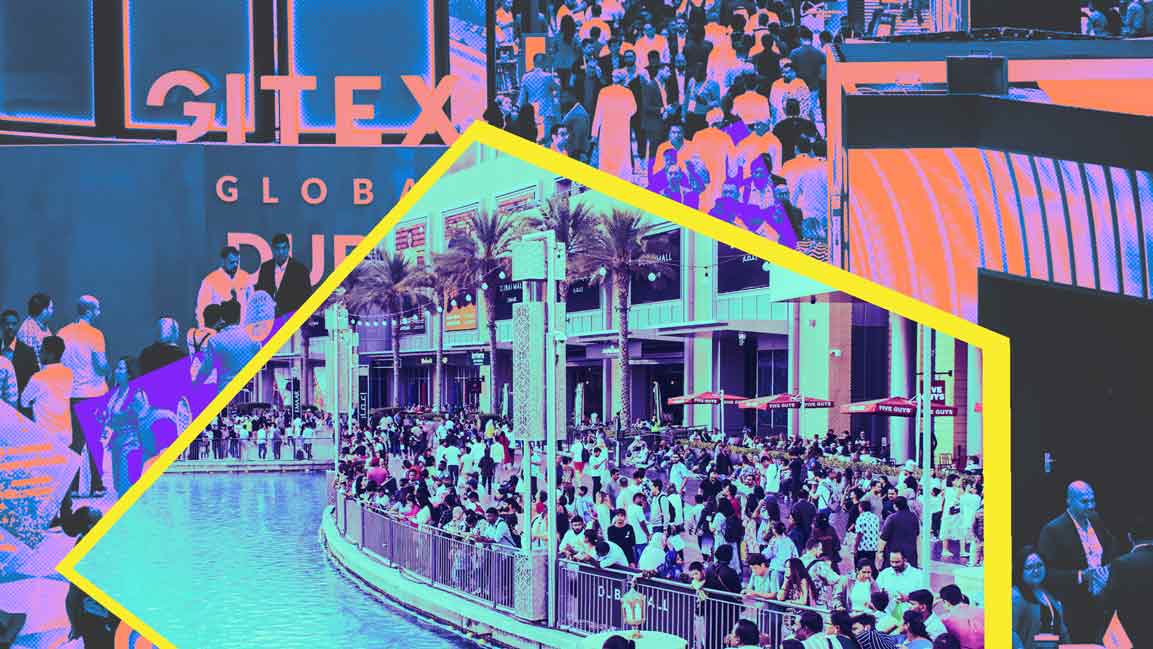- | 9:00 am
Do brands with purpose drive the most loyal customers in the Middle East? It’s a yes
Experts emphasize that a mission-driven approach is only effective when grounded in authenticity, consistency, transparency, and accountability.

When an overwhelming number of brands are vying for attention, primarily driven by the rise of social media and social commerce, they face the challenge of differentiating themselves in an increasingly crowded market.
To stand out, many brands are turning to mission-driven campaigns that resonate with a youth-dominated market.
A 2023 McKinsey report found that products with environmental, social, and governance (ESG) claims accounted for 56% of industry growth, surpassing expectations. These products grew by 28%, compared to 20% for those without ESG claims, underscoring the increasing importance of mission-driven approaches in consumer purchasing decisions.
Razan Akrouk, GMG’s Chief People and Sustainability Officer, notes that consumers are informed, selective, and values-driven, and they expect brands to demonstrate transparency, responsibility, and a commitment to positive change. “Brands that stand strongly and authentically for something are the ones that earn trust, loyalty, and advocacy.”
Similarly, Wael Ismail, Vice President for Corporate Affairs for the Middle East, North Africa, and Pakistan at PepsiCo, says consumers today tend to support brands with robust and demonstrable social and environmental commitments. “As brands, we must recognize these expectations and back up our commitments with action.”
KEY REASONS
Akrouk attributes the rise of purpose-led businesses in the region to a combination of evolving consumer preferences, regulatory momentum, and economic diversification efforts.
A 2022 report stated that nearly half of UAE consumers are purpose-driven buyers, seeking brands that align with their values through sustainability, health-conscious offerings, or social impact initiatives.
At the same time, Akrouk adds, regional governments are setting ambitious national visions, emphasizing sustainability, innovation, and economic growth beyond traditional industries. “This creates a business environment where companies are encouraged and expected to embed purpose into their operations.”
Laurent Duffier, Managing Director of L’Oréal Middle East, highlights a growing regional shift toward purpose-driven businesses, driven by changing consumer expectations, a stronger focus on sustainability, and ongoing economic transformation.
“Today’s consumers – particularly the digitally savvy younger generation – are increasingly drawn to purpose-driven brands. They’re not just looking for high-quality products; they seek brands that reflect their values, demonstrate ethical sourcing, and contribute positively to society.”
This trend is particularly evident in the beauty industry, where inclusivity, sustainability, and environmental responsibility play a key role in purchasing decisions.
Duffier points to data reflecting this shift, noting that 97% of consumers in the region recognize the urgency of climate change, with 86% willing to adopt more sustainable lifestyles. In the UAE, this eco-conscious mindset is even more pronounced, with 58% of consumers identifying as environmentally aware.
He also emphasizes the cultural factors driving this shift, noting that the Middle East’s strong community and family values are key in shaping consumer loyalty.
ENSURING AUTHENTICITY
Mission-based campaigns must be authentic in their approach. A 2023 Edelman Trust Barometer Special Report found that 58% of consumers conduct more research before making a purchase, and the same percentage become more conscious of their buying habits by reducing impulsive purchases. Many will even boycott brands that do not align with their own morals and values, with 77% of consumers saying they will actively avoid brands based on the location of their headquarters.
Duffier emphasizes that a mission-driven approach is effective only when grounded in authenticity, transparency, and accountability.
“Consumers today expect brands to align their commitments with clear, measurable action. Ensuring authenticity requires more than just communication—it demands leading with action, measurable impact, and long-term commitment.”
He highlights transparency as essential for building trust and allowing consumers to make informed choices about the products they use. Accountability is key to maintaining authenticity.
“Authenticity comes from consistency, reliability, and data,” Ismail adds.
MEASURING SUCCESS
Successful mission-driven brands cultivate lifelong customers who are loyal and trusting of a brand. According to the Edelman report, 59% of consumers are more likely to try new products from a trusted brand, regardless of price, while 67% are more inclined to remain loyal and advocate for brands they trust.
Ismail says success is measured by the trust gained from communities, partners, and consumers. “Businesses aligning with national and social expectations can navigate complex operating environments successfully.”
Duffier believes that success goes beyond financial performance; it is also defined by the tangible impact of the organization’s initiatives on the environment, society, and communities.
He explains that their sustainability and social responsibility progress is measured through three key pillars: environmental impact, social impact, and stakeholder engagement.
“Our environmental progress is tracked through science-based targets,” says Duffier, adding that it goes beyond sustainability, such as L’Oréal’s focus on social impact, particularly women’s empowerment and economic inclusion.
Another critical measure of success is the organization’s influence on the industry and stakeholder engagement, mainly through strategic partnerships. “Our success is not just about achieving targets but creating lasting change.”






































